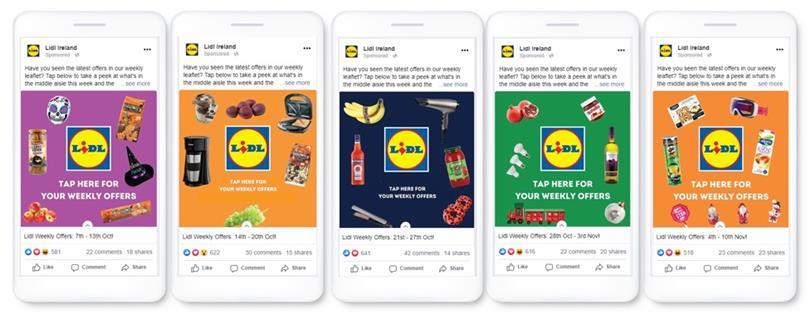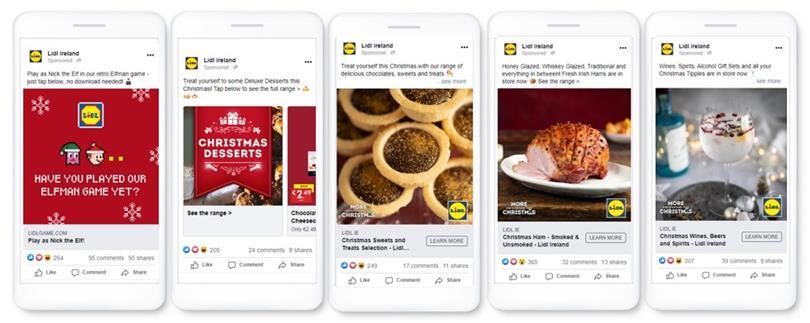How do you measure a piece of paper?
It is a question pondered by marketing teams for many years, particularly grocers traditionally associated with deploying printed leaflets and seasonal catalogues to drive both in-store footfall and sales. Today, that simple question may be one few can afford to ignore much longer.
Research reveals that shoppers are now less likely than ever to be influenced by print marketing. For example, only 3.6% of UK consumers will take action from a piece of direct mail, while 26% will either recycle it or throw the piece of paper away.
Conversely, more than half of retail sales are now influenced by digital, and customers are predisposed to increasing their spend when they use digital as part of the shopping experience.
The global Covid-19 pandemic, and the subsequent search for a ‘new normal’, could also expedite digital’s influence in grocery – an industry which spent much of 2020 readjusting its focus to one of availability and safety. The availability of goods may have largely normalised, but the coronavirus crisis means overall in-store footfall is down and online delivery sales are up, with nearly one-fifth of British households ordering home deliveries in the month to mid-June
And a bleak economic outlook could lead to shopping habits shifting even further. Indeed, with the Bank of England predicting the UK economy will shrink 9.5% and unemployment will hit 7.5% in 2020, the price of goods could well become a key consideration for consumers.
So, under these circumstances, how can retailers use every channel as efficiently as possible to maximise trade or brand messaging awareness with customers doing their weekly shop? And ultimately drive footfall in-store or online, convert and grow market share?
A case study
For discounters without an e-commerce website, this is a particularly pertinent question. In fact, it was one contemplated by Lidl Ireland last year, months before Covid-19 even materialised in Europe.
For years, customers have been very familiar with the weekly leaflets, printed and distributed to publicise the company’s numerous money-saving offers and weekly specials.
With the objective to drive store footfall and sales, the discount retailer and its creative agency, began looking at ways to bring its mighty printed leaflets online, utilising a digital solution capable of replicating the feeling of reading a brochure. That solution came courtesy of Facebook.
The key numbers behind Lidl Ireland’s Facebook campaign
10X
return on ad spend
2.3%
increase in overall turnover at trial stores
2.7%
increase in number of customers buying items promoted with Instant Experience
1.9%
increase in turnover from promoted items
Source: Facebook
We are going to explore “5 reasons why retailers should digitise print marketing“
In 2019, Lidl Ireland opted to use Facebook’s Instant Experience product: a full-screen advertising solution that enables marketers to promote brands or the latest offers via a collection of immersive images, videos and carousels in the Facebook feed. Optimised for both web and mobile, this interactive experience is served to audiences via a single digital ad.
“For grocery, this comes back to how best to create a frictionless future,” Katy Clark, Facebook’s head of industry for grocery, says.
How do we shorten the path to purchase, how do we make it as easy as possible for our clients to showcase what they have to customers and then enable them to buy it?
1. Reach
The pure reach of digital means retailers are far more likely to hit a greater number of people with a particular campaign or promotion. Covid-19, and the shift to working and spending more time at home, has only made this more salient. Indeed, Ofcom’s annual Online Nation report found the pandemic had radically changed online behaviour, with adults spending an average of four hours a day online, up from three-and-a-half in September 2019.
Facebook boasts 2.7 billion monthly active users globally, with an estimated 3.3 million residents in Ireland alone using the platform. And this directly benefited Lidl Ireland when its leaflets were brought to life digitally.
“The reach achieved digitally significantly outstrips that of a printed leaflet,” Clark explains.
“The format enables grocers to deliver products and deals at scale into the palm of their customers’ hands, all while maintaining the familiar look and feel of a trusted weekly comms channel.”
2. Targeted
Using a digital platform also allows retailers to be far more targeted, enabling marketers to tap into specific customer segments and groups. This means retailers can, for example, tailor promotions to particular demographics, who may have a propensity to use such offers as part of their weekly shop.

In comparison, printed leaflets left in a box in the foyer of a bricks-and-mortar store are going to be picked up by a myriad of people whom grocers may lose track of as soon as they leave the store.
3. Measurable
It can be difficult to truly measure the effectiveness of a piece of paper and offline media in general. By digitising print, grocery retailers are far more likely to gain a greater understanding of how that campaign has contributed to sales and to measure the ROI. In addition to sales and footfall, measurable performance indicators could also include reach, impressions, dwell time and brand warmth.
Performance can be measured through conversion lift studies, for grocers driving sales online, or through a Match Market Test for those, like Lidl, which do not have an e-commerce offering. Match Market Tests compares two sets of stores which have been identified as mirroring performance against a set of KPIs (ie footfall, turnover and basket spend) to compare the uplift in in-store sales reached by ads that used Instant Experience compared to stores that did not.
After creating several digital iterations of the flyers, Lidl Ireland was buoyed by the results of the campaign. Between 30 September and 3 November, it led to a 10X return on ad spend, a 2.3% increase in overall turnover at trial stores and a 1.9% increase in turnover from promoted items. Lidl has since looked to scale this across the business and into new markets.
4. Dynamic
Digital advertising tools enable marketers to deliver engaging and dynamic content to customers in a more timely manner, including swapping in and out products through inventory feeds, for example. A digital version can also be quickly adapted for key seasonal moments, with relevant products, pricing and messaging incorporated as the event draws closer.

Print, meanwhile, has a much longer lead time which runs the risk of products becoming out-of-stock by the time the leaflet is in front of the customer.
5. Environment
Finally, digitising printed leaflets can play an important role in a company’s broader sustainability strategy.
While even fully paperless companies retain a carbon footprint, digitising print can make a positive contribution towards helping retailers cut down on waste and reduce their environmental impact.
Image by: Brooke Lark

